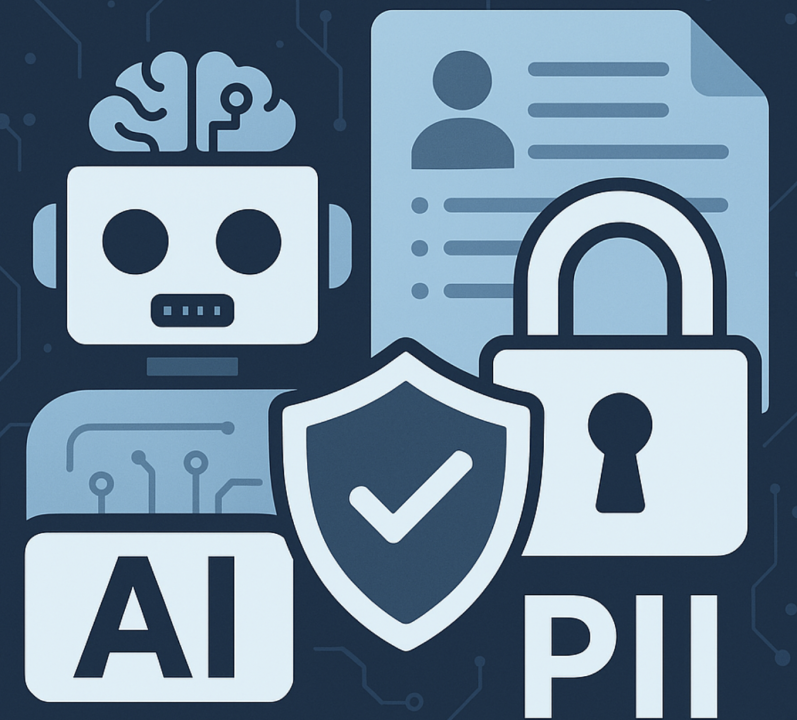
In today’s digital age, artificial intelligence (AI) has become increasingly mainstream, shaping everything from how we search online to how we interact with technology daily. However, as AI grows more prevalent, concerns about privacy, particularly regarding personally identifiable information (PII), have emerged as critical issues that users must understand.
Mainstream AI tools, such as conversational AI assistants (e.g., ChatGPT, Google Bard) and generative AI platforms (e.g., Midjourney, DALL-E), rely heavily on data gathered from the internet. These AI models are trained using massive datasets, including text from websites, social media, forums, and publicly available records. For instance, Clearview AI, a facial recognition startup, was trained using billions of images scraped from social media and websites, raising significant privacy concerns (Source: The New York Times, 2020).
Consequently, each interaction users have with AI—each query, request, or conversation—can potentially become part of future training datasets. In 2023, a significant privacy incident occurred when Samsung employees unintentionally leaked proprietary company information by inputting sensitive corporate data into ChatGPT, demonstrating how easily private information can become vulnerable (Source: TechCrunch, 2023).
When users input personally identifiable information (names, addresses, phone numbers, emails, or sensitive details like financial or health information), they risk embedding their private data within AI’s expansive dataset. This data could inadvertently resurface in future interactions, leading to unintended privacy breaches or misuse.
Moreover, mainstream AI companies typically retain user queries to refine their models continuously. Even when anonymization is promised, the depth and specificity of personal data in user queries can sometimes defeat anonymization techniques, especially when aggregated with vast amounts of additional information available online.
The risks of sharing PII with AI include:
Identity Theft: Unintended exposure of sensitive personal data can make individuals vulnerable to identity theft or targeted phishing attacks.
Data Misuse and Breaches: Once personal data becomes embedded in AI datasets, the potential for misuse by third parties or exposure through security breaches dramatically increases.
Loss of Control Over Personal Data: Users may unknowingly relinquish control of their information once entered into an AI query, losing the ability to manage or delete it effectively.
Zero Trust Identity Best Practices
Integrating zero trust principles into your AI interactions can significantly enhance privacy and security. Zero trust is a security framework that requires continuous verification, explicitly validating every interaction, and minimizing access privileges.
Here are detailed zero trust identity best practices users and organizations can follow:
Enforce Continuous Authentication:
Utilize advanced methods such as adaptive authentication, biometrics, or behavioral analytics to continuously verify user identities.
Example: Companies like Okta and Duo Security offer adaptive authentication that evaluates contextual signals such as location, device health, and behavior patterns (Source: Gartner, 2022).
Least Privilege Access:
Limit access rights strictly to necessary resources required for each interaction, minimizing exposure.
Example: Microsoft Azure’s Conditional Access policies restrict user access based on defined conditions, significantly lowering risk (Source: Microsoft, 2023).
Micro-Segmentation:
Divide resources into isolated segments to limit lateral movement if an account is compromised.
Example: VMware’s NSX platform applies micro-segmentation to ensure network isolation and reduced risk exposure in case of breaches (Source: VMware, 2023).
Monitor and Audit Regularly:
Continuously monitor and log all AI interactions, regularly auditing logs to identify unusual patterns or breaches.
Example: Splunk’s platform provides robust log management and real-time analytics to detect suspicious activities (Source: Splunk, 2023).
Implement Strong Identity Governance:
Establish rigorous identity governance practices, clearly defining and managing user roles, permissions, and lifecycle.
Example: SailPoint offers comprehensive identity governance solutions ensuring accurate role assignments and controlled user access (Source: SailPoint, 2023).
To mitigate these risks and securely leverage AI, users should integrate both personal privacy practices and zero trust principles into their regular online interactions. Understanding how AI models are trained, the implications of sharing personal data, and proactively adopting these protective measures will enable individuals and organizations to enjoy the benefits of AI without compromising their security.